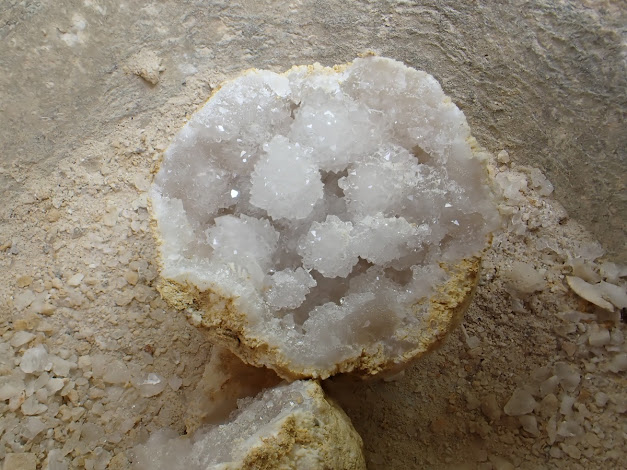Round stone with crystallised quartz in its center cavity
Today, I'd like to talk about the fascinating geode crystals I experienced recently.
The other day, I went to the Kinshozan Fossil Museum in Ogaki, Gifu Prefecture, Japan for the first time in a while.
This museum is famous for its Paleozoic fossils, which formed 250 million years ago during the Permian period and were excavated from nearby Mount Kinshozan.
This specimen, preserved in alcohol, is a Metacrinus rotundus. It is a descendant of the Japanese sea lily that flourished during the Paleozoic Era and is a species of stalked crinoid in the family Isselicrinidae.
Sea lilies are fascinating marine creatures with delicate, feathery arms. Although they are called 'sea lilies', they are not plants, but echinoderms like starfish and sea urchins.
This is a basal stalk of the fossilised sea lily. Regrettably, it is said that there are very few fossils of the feathery arms discovered as far as domestic fossils are concerned.
According to the explanation note, only fragments of sea lily fossils were found at Mt. Kinshozan. However, a sea lily fossil with a stalk measuring 8cm in diameter was excavated at Mt. Kinshozan. This is said to be the largest in the world. But I think this fossil is not open to the public.
In this museum, they display over 700 fossils of fusulinas, corals, sea lilies, mollusks, and bivalves that inhabited the equatorial coral reefs about 250 million years ago.
In addition, you can try various experiences with fossils in this museum. For example, let's smash a stone and take out a fossil of a trilobite inside! Or the more you polish the fossil, the clearer it appears!
By the way, have you ever heard of geode crystals?
From the outside, they look like ordinary stones, but when you break them open, the inside is filled with sparkling crystals, making them a mysterious and fascinating natural stone. Their appearance, like a treasure chest, has fascinated many people since ancient times.
So, I tried cracking a geode open to discover the hidden crystals inside.
These are geode crystals. They look like a round stone with a diameter of about 4 cm.
By the way, this geode crystal is from Morocco.












Comments
Post a Comment